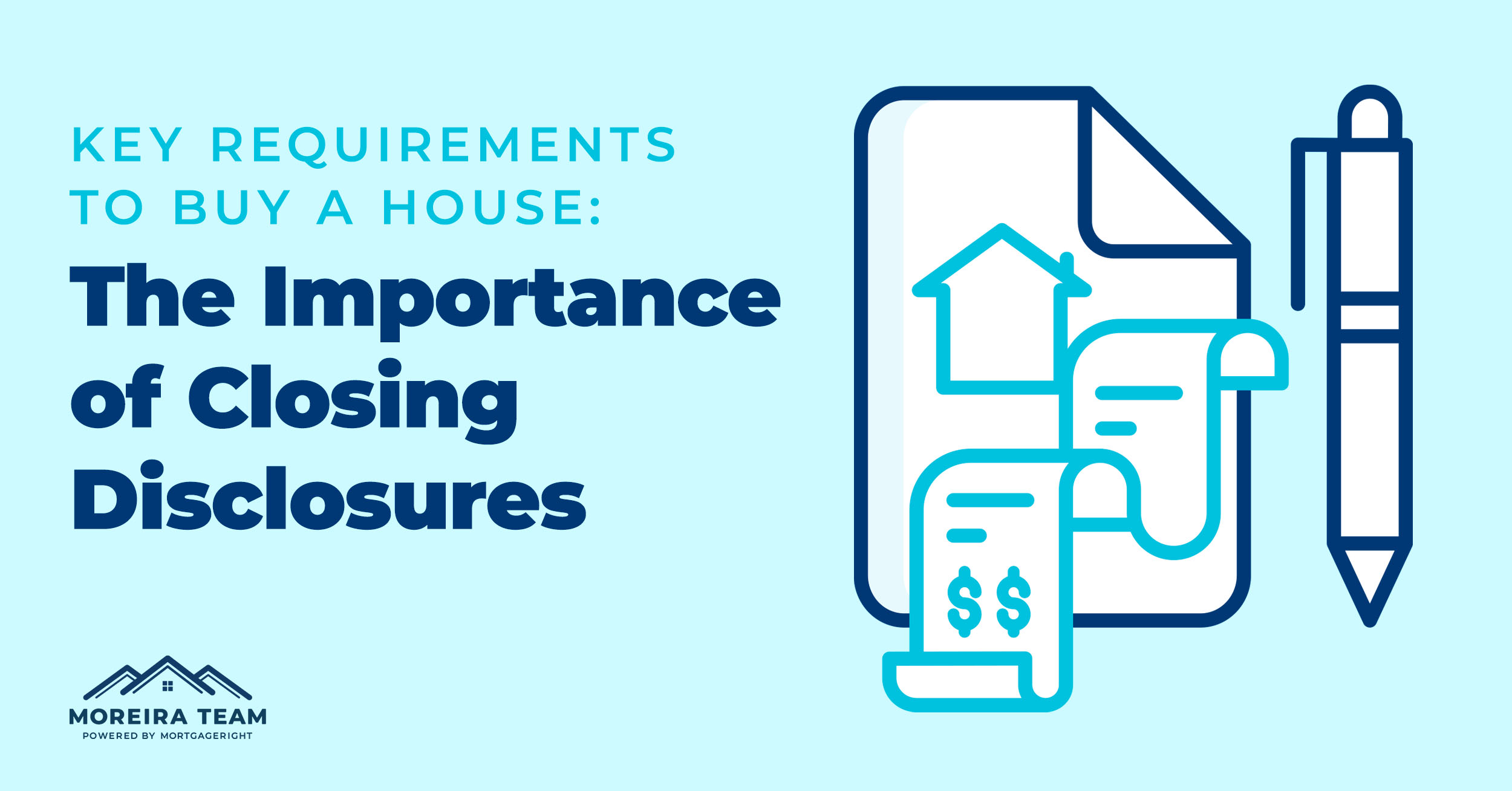
In this article
- Key Takeaways
- Why a Closing Disclosure Is One of the Requirements to Buy a House
- Items to Double-Check on Your Disclosure
- 1. Spelling
- 2. Loan Details
- 3. Principal
- 4. Interest Rate
- 5. Prepayment Penalty
- 6. Balloon Payment
- 7. Estimated Monthly Payment
- 8. Estimated Taxes and Escrow
- 9. Closing Costs
- 10. Loan Disclosure
- 11. Appraisal
- Are You Looking for the Right Lender
One of the most important and overlooked steps for a first time home buyer is to check the closing disclosure document.
A detailed review of your disclosure documents isn’t necessarily one of the requirements to buy a house, but rubber stamping the documents without double-checking them could have some serious consequences.
The disclosure documents come toward the end of the lending process. Your lender must disclose all the costs you’ll incur three business days before you close on a new mortgage.
Your lender will happily explain each item on the form, but if they’re a good lender, you probably already know most of what’s in the document.

The most important thing is double-checking the line items on your disclosure because mortgages are long-term agreements. Even if you trust your lender, much human effort goes into processing your mortgage, and human effort comes with the risk of human error.
A misreading of written material on your application, system processing error, input typo, or any other little hiccup along the way could result in 15-30 years of consequences, depending on your loan terms.
But since your signature on the documents is one of the final requirements to buy a house, you might as well read it over a few times.
Key Takeaways
- Signing your disclosure documents is one of the final requirements to buy a house.
- The Consumer Financial Protection Bureau’s Know Before You Owe law mandates the documents.
- The documents offer a final chance to check for errors.
- A good lender won’t leave surprises in your disclosure documents.
Why a Closing Disclosure Is One of the Requirements to Buy a House
The law legally mandates the closing disclosure as a requirement to buy a house—or at least to take out a mortgage.
Congress passed the law, informally called the “Know Before You Owe” rule, in 2010, but the Consumer Protection Bureau took another five years to implement it fully.
Basically, the closing disclosure helps to protect all parties involved. It allows lenders to ensure that the borrower is fully informed and can accept the terms.
Most importantly to the buyer, the closing disclosure provides a transparent estimate of financial obligations, both from the loan lifetime and monthly cost perspectives.
Items to Double-Check on Your Disclosure
1. Spelling
Like your kindergarten teacher (and every teacher since) told you: Make sure your name is written clearly at the top.
Ensure that your full legal name (and any other co-signer names) are spelled correctly on the document. While most people are understanding about typos, the letter of the law is not.
The same goes for other important information and proper nouns, like your street address and social security number.
2. Loan Details
Your loan details are usually on the first page of your disclosure document near the top right. The details should include the type of loan, such as conventional, FHA, or VA, whether it is fixed or variable, and the length of the loan terms. There will probably also be loan identification numbers.
3. Principal
The principal is just a fancy lending word for the money you borrow. If it’s more than your offer price on the house, ask your lender what’s up.
They might have added the closing costs to your loan. Rolling closing costs into the loan principal reduces the upfront costs, but you may ultimately pay more because of the extra interest. The principal may be higher than the offer amount if buyers include repair costs or extra cash in the loan.
4. Interest Rate
Your interest rate is the amount of extra money you pay to the bank over the loan lifetime in exchange for the loan.
The interest rate is important because it’s the lowest number in your disclosure documents but has the highest impact on your lifetime loan cost. A fraction of a percentage change can result in a five-figure difference over 30 years.
When applying for a loan, be sure your lender can lock in the initially quoted interest rate. Good lenders can lock interest rates when you apply for your loan, so you won’t be impacted by any rate increases while finalizing your loan. Once a rate lock is agreed upon between the lender and the borrower, the lender cannot change it.
5. Prepayment Penalty
The prepayment penalty ensures buyers hold a mortgage long enough to be worth it for the lender. Since it costs a lot for an underwriter to establish and maintain a new loan, the lender wants to be sure the borrower makes enough interest payments to cover their costs.
If you decide to pay your loan in full, the lender may charge an additional fee (usually a one- or two-percent penalty within the first two or three years of the loan’s lifetime).
6. Balloon Payment
A balloon payment requires the final mortgage payment to be a large lump sum, much more than the regular monthly payments.
Balloon payments can afford buyers lower upfront payments or more favorable terms in exchange for the larger payment at the end of the loan. They are more common for borrowers who renovate homes or plan to sell their homes well before the end of the loan.
Ask your lender about other options if your disclosure document indicates an unexpected balloon payment.
7. Estimated Monthly Payment
The mortgage process involves so many numbers, percentages, and negotiations that it can be challenging to keep track of your actual cash costs. That’s where your disclosure documents help you, the buyer.
The estimated monthly payment will include loan principal, interest, property taxes, homeowners insurance, and private mortgage insurance.
Be sure you can afford to make the Estimated Total Monthly Payment every month. If it’s different from what you thought it would be, ask your lender why it’s changed.
8. Estimated Taxes and Escrow
When you buy a home, your lender opens an escrow account to hold your insurance and property tax payments. Since you typically pay both expenses in lump sums, your monthly mortgage payments will include a prorated portion of your estimated taxes and insurance.
Once it’s time to pay taxes or write your insurance provider a check, the money will be waiting in your escrow account. But in rare instances, this isn’t the case, and you’ll be required to pay the larger lump sum yearly or twice yearly.
Double-check with your lender to know what to expect.
9. Closing Costs
Closing costs can confuse and surprise you, so ensure you understand them. Sometimes, the person selling the house covers these fees or adds them to the loan principal. Other times, you have to pay them in cash when you close.
One of the pages in the disclosure should break down the closing costs item by item and say who is responsible (buyer or seller) for each one.
10. Loan Disclosure
The loan disclosure is a section within the larger disclosure documents where all the small print about your loan is, such as what happens if you sell or transfer the property and what happens if you make late payments.
11. Appraisal
If your lender used an appraisal to determine the actual market value of your home, you are entitled to receive a copy of the appraisal. Ask your lender if you don’t see an appraisal document. It may be because the lender did not need an appraisal to secure the loan.
Are You Looking for the Right Lender
The Moreira Team works with homebuyers daily to help them navigate the requirements to buy a house. If you find surprises in your disclosure documents or are unsure where to start, consider calling us.


